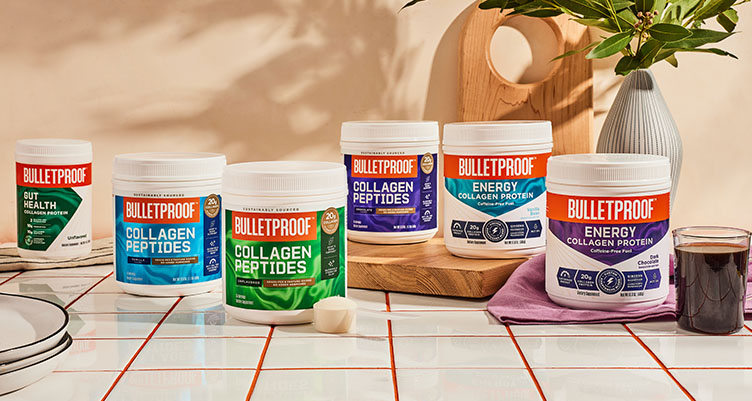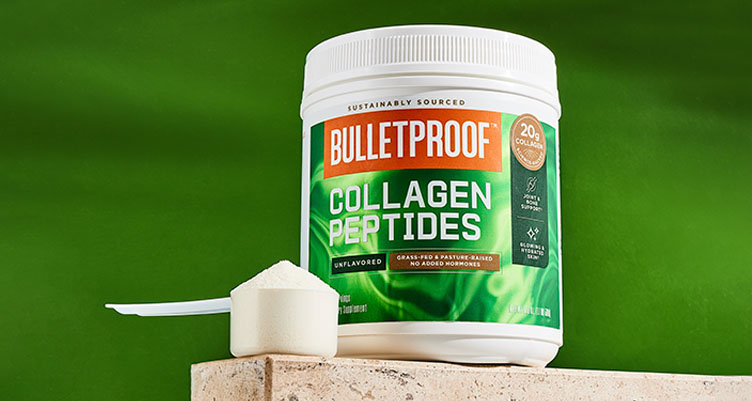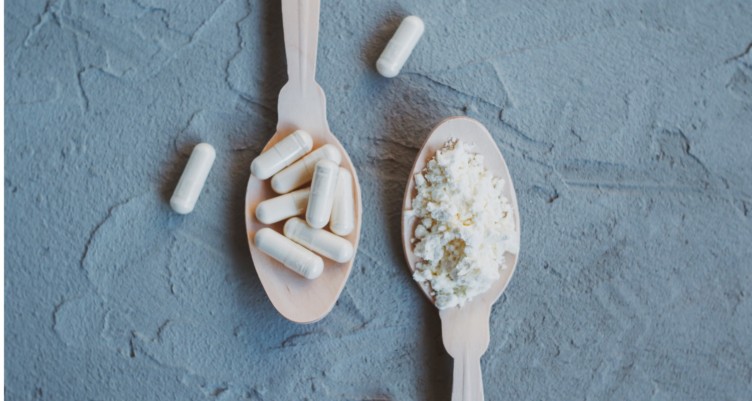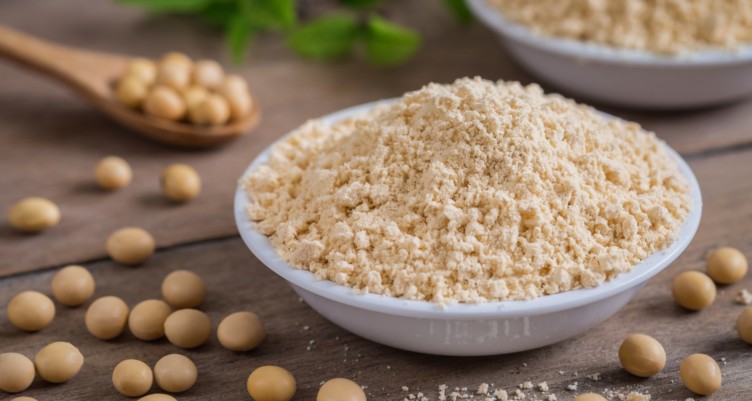How to Choose the Best Protein Powder for Your Body

An objective look at protein powders is hard to find.
Johnny Powerlifter says you should have a thousand grams a day. Victor Vegan says you’re burdening your kidneys if you have more protein than you get from broccoli. Do you supplement? Do your proteins have the right amino acid profile, or should you combine proteins? Is your protein complete? Are plant or animal sources more bioavailable? Do you reach for the isolate, concentrate, or hydrolysate?
To clear up some of the confusion and to help you choose what’s best for your biology, here’s an overview of protein supplements, their sources, and their processing methods and quality measures.
Absorption, digestibility, amino acids

Before comparing proteins, you should know what you’re comparing. There are several ways to measure protein quality, and each measure has its own strengths and weaknesses.
The most widely accepted measures of how your body uses different types of protein are:
- Biological value and
- Protein Digestibility Corrected Amino Acid Score (PDCAAS)
These are both solid measures to score a protein’s quality and bioavailability (how well your body absorbs and uses protein), and the manufacturers of your supplements are likely to have these measures printed on the label or available on request.
Every scoring system has its own benefits and shortcomings, so it’s best to check more than one quality score when deciding what protein to use.
Three ways to determine the best protein for your body
1. Biological value
Biological value (BV) is represented on a scale of 0-100, 100 being the highest bioavailability. BV determines how much of the digested protein stays in your body.[1]
2. Protein Digestibility Corrected Amino Acid Score (PDCAAS)
PDCAAS, or the protein digestibility-corrected amino acid score (say that five times fast!) ranges from 0-1.0, 1.0 being the most likely to meet human protein needs. PDCAAS measures the amount of protein your body flushes out, so we end up with a pretty good idea of how much your body actually uses. It accounts for the protein needs of humans,[2] as opposed to outdated methods (for example, the protein efficiency ratio) that used the protein needs of rats as the reference point.
3. Amino acid profile
You’ll also want to look at a protein’s amino acid profile. A complete protein will contain the full range of essential amino acids (amino acids you have to get from your diet) or it will contain essential amino acids that are difficult to get from dietary sources.
A complete amino acid profile means that every amino acid makes an appearance. It doesn’t mean it has the amounts you need. The amino acids link up and synthesize proteins in the body only when they have the right partners. If an essential amino acid is available in small amounts, that amino acid limits the amount of protein you can synthesize in the body. Collagen helps balance out these proportions, which we’ll talk about in a minute.
Using these measures, let’s compare protein supplements.
Undenatured whey protein

Quality:
- Biological Value: 104
- PDCAAS: 1.0
- Amino acid profile: Complete
Pros:
- People with dairy sensitivities from milk sugar (lactose) and milk protein (casein) often tolerate whey
- Complete amino acid profile
- Bioavailable
- Reverses atherosclerosis
- Helps the liver make glutathione
Cons:
- Heated whey doesn’t boost glutathione
- Heating whey oxidizes cholesterol (you can easily avoid this by getting undenatured whey protein and not heating it)
Whey protein is easy to digest and contains compounds called bioactive milk peptides (BMPs) that reduce stress and improve sleep. You can buy BMPs as a standalone supplement, but you’ll save some money getting them from whey protein. Whey also contains lactoferrin, which scrubs your arteries.[3]
Whey protein also gives your liver what it needs to produce glutathione,[4][5] your body’s master antioxidant. Glutathione scavenges free radicals and helps your liver neutralize toxins, among other things. If you’re using a denatured whey protein, you can offset that loss by supplementing with glutathione.
Undenatured whey vs. whey protein isolate
Avoid whey protein isolate. The heating and refinement process denatures the protein, which destroys nutrients, eradicates growth factors and renders the protein useless to your liver for glutathione production. Plus, there are small amounts of fat found in whey, and processing into isolate form oxidizes the fat which contributes to inflammation.
Undenatured whey protein is most effective. Heat and pressure reduce the effectiveness of BMPs and researchers found that only undenatured whey boosts glutathione. When choosing a whey protein, be sure to choose one that hasn’t been processed over 180 degrees.
Because of its neutral taste and its digestibility, it’s easy to go overboard with whey. Use around two tablespoons per day, up to four if you’re working out or recovering from injury. More whey than that will give you too much cysteine and methionine, which can contribute to inflammation.
To balance amino acid ratios while upping your protein intake, combine undenatured whey and collagen protein.
Collagen Peptides

Quality:
- Biological value: Uncertain
- PDCAAS: 0, only because it does not contain tryptophan, otherwise it would be up there with the other animal protein sources
- Amino acid profile: Incomplete, although it contains glycine, hydroxyproline, and proline, which are scarce in the standard American diet
Pros:
- Gut bacteria turns collagen peptides into butyric acid which is good for digestion
- Supports connective tissue repair[6]
- Improves skin appearance
- Fills in amino acid gaps
Cons:
- Not a stand alone protein source; must get other amino acids from food, whey, etc.
- Heat processing reduces the benefit of collagen (no worries, you can get enzymatically processed hydrolyzed collagen)
Collagen peptides are in every tissue of your body. Supplementing collagen provides all the amino acids you need for connective tissue repair, and it thickens the skin for a more youthful appearance.
Although collagen has an incomplete amino acid profile, the amino acids it does provide fills in the gaps you commonly see in dietary protein and protein supplements.
Take whey, for example. More than four tablespoons of whey will overload cysteine and methionine, which causes inflammation. People with a higher protein requirement (athletes, people with injuries) can balance the amino acid profile of whey and avoid inflammation by adding collagen instead of adding more whey.
Bovine colostrum

Quality:
- Biological value: Depends on the date. For mammals, biological value hovers close to 130 immediately after birth and slowly declines by 10-15% until milk production takes over.[7]
- PDCAAS: 1.0[8]
- Amino acid profile: Complete
Pros:
- Contains growth factors
- Boosts immune system with probiotics and antibodies
- High bioavailability
Cons:
- Colostrum has small amounts of lactose and casein, which may trigger reactions if you’re super sensitive
- Expensive compared to other protein sources
When mama cow births a calf, the first thick, yellow-gold pre-milk she produces is packed with antibodies and probiotics for her growing calf at its most vulnerable stage of life.
This “liquid gold” is called colostrum. Human mothers produce it too, and that’s why initiatives have popped up in hospitals to encourage mothers to breastfeed shortly after birth. The sooner babies get protection from colostrum, the better.
Colostrum contains growth factors that trigger cell growth and DNA synthesis,[9] which makes sense for a growing baby or calf. But do walking talking adults benefit from colostrum supplementation?
Athletes who took bovine colostrum saw an improvement in performance,[10] a jump in measurable insulin-like-growth factor 1 (IGF-1) as well as enhanced lean body mass.[11][12]
Casein protein

Quality:
- Biological value: 77
- PDCAAS: 1.00[13]
- Amino acid profile: Complete
Pros:
- Bioavailable
- Complete amino acid profile
- Slow absorption rate
Cons:
- High allergen/sensitivity risk
- A1 casein associated with diabetes and ischemic heart disease
You already know that whey is a milk-derived protein. Casein is the other protein found in milk. A fitness industry favorite, casein absorbs slowly and the muscles readily use it for recovery.
It’s a fine choice for people who can tolerate it, but a large portion of the population reacts to casein. It’s a common allergen, autoimmune trigger and people with even a mild sensitivity can experience symptoms like digestive upset and skin issues.
There are two main types of casein protein, A1 casein, and A2 casein. The most common dairy cow breeds produce A1 casein,[14] so that’s what you find most often in dairy products and casein protein supplements. A1 casein is associated with diabetes[15] and ischemic heart disease.[16]
A2 dairy products are a little more difficult to source because they come from goats and cow breeds that produce less, like Jerseys and Guernseys. You can avoid problems by finding an A2 milk derived casein protein (or skipping casein and opting for whey).
Egg protein

Quality:
- Biological value: 100
- PDCAAS: 1.00[17]
- Amino acid profile: Complete
Pros:
- Bioavailable
- Complete amino acid profile
Cons:
- High allergen risk
- Processing into supplement form oxidizes cholesterol
Eggs are highly bioavailable and have a complete amino acid profile, although egg protein supplements fall short.
Processing whole eggs into protein powder oxidizes cholesterol in the yolk. You miss out on the B vitamins, choline and omega-3s if you opt for egg white powders. You can find brands that minimize the oxidized cholesterol content in egg protein powders, but that’s an expensive form of an otherwise cheap and abundant food-based protein. So just eat pastured eggs.
You also need to watch your food sensitivities. Eggs (whites and yolks) are high on the allergen list, and people spend years unaware that they have an egg sensitivity. They miss the connection between eggs and skin problems, joint pain, or digestive discomfort.
Pea protein

Quality:
- Biological Value: 65
- PDCAAS: 0.893
- Amino acid profile: Incomplete
Pros:
- Decent protein source for vegans
- Amino acid profile
- Bioavailable
Cons:
- Contains phytic acid that blocks nutrients
- Contains lectins that trigger inflammation and autoimmune response
- Gritty texture (varies by formula, can be masked with thickeners)
Pea proteins are sold alongside to every major protein supplement, and their popularity is rising. Though pea protein isn’t a complete protein, you can combine it with other sources to get all of the essential amino acids.
A benefit of pea protein is that it inhibits linoleic acid oxidation,[18] and linoleic acid oxidation causes heart disease. Linoleic acid is in vegetable oils and those aren’t food, so this benefit of pea protein isn’t as much of an issue for you if you’re eating the right fats.
Plants rely heavily on chemicals to keep hungry herbivores away. The downside of pea protein is that peas produce chemicals that are bad for you to discourage you from eating them. Nuts, seeds and legumes (like peas) contain phytic acid,[19] a substance that blocks the absorption of iron, zinc, calcium, manganese and other nutrients.[20] Another type of chemical they produce, lectins, cause inflammation and autoimmune responses if you’re sensitive to them.
How to avoid antinutrients in pea proteins
Fresh green peas (as opposed to dried) are lower in phytic acid, because phytic acid develops when the plant goes into storage mode. Whether they knew why or not, the old timers used to soak dried grains and beans before cooking. The practice made a comeback with new knowledge of how phytic acid blocks nutrient absorption. That’s why soaking and discarding the water removes a portion of phytic acid. The bean leaches out a portion of its phytic acid before waking back up.
Manufacturers use ground dried peas to make pea protein, so storage mode is in full effect with plenty of phytic acid to protect the seed from hungry animals and post-workout humans. Some manufacturers use extra processing to remove some of the phytic acid, as well as some of the oligosaccharide – the naturally-occurring carbohydrate that gives beans their…ahem, musical qualities. Despite extra processing, a portion of phytic acid and oligosaccharides hang behind, headed for your smoothie and your body’s mineral stores.
Soy protein

Quality
- Biological Value: 74
- PDCAAS: 0.98-1.0
- Amino acid profile: Complete
Pros:
- Complete source for vegans
- Neutral taste
Cons:
- Non-organic soy is genetically modified and loaded with glyphosate
- Messes with your thyroid hormones and sex hormones
- Contains phytic acid and lectins
Vegans turn to soy to meet their protein needs owing to its complete amino acid profile.[21] However, soy is far from perfect.
In the 1990s, soy was genetically modified to survive “extreme” amounts of the broad-spectrum herbicide glyphosate.[22] Researchers have identified strong associations between glyphosate and cancer,[23] so you want to avoid it at all costs.
Even without the deadly sprays, soy messes with your system. It has a measurable effect on your estrogen receptors[24][25] and it impacts thyroid function.[26][27] And since soy is a legume, you run into the same phytic acid and lectin problems that you did with pea protein.
Protein FAQs
Do vegans get enough protein?
All essential amino acids are found in plants but rarely does one plant stand alone as a complete protein. You can get all of your amino acids with careful planning, but most vegans do not map out their essential amino acids with mathematical precision.
Every now and again, you’ll find a plant that’s a complete protein. One example is quinoa–it has a complete amino acid profile, but you have phytic acid and lectins to deal with. To keep it from attacking you, you have to ferment it, and when was the last time you saw fermented quinoa on the menu? Besides, gram for gram it doesn’t have anywhere near the protein content that animal proteins have.
So yes, vegetarians can get enough protein, but it takes extreme planning. Most vegans simply do not list and check off all of the amino acids consumed each week.
Not to mention, protein pushes carbs off of the plate, which helps keep your blood glucose in check. Vegans have to be careful not to let blood sugar hit extreme highs, because extreme lows are sure to follow.
If you’re not sure how much protein you need, this guide can help.
Does protein burden the kidneys?
When you first become Bulletproof and describe your new lifestyle to others, you’re going to hear at least once:
“All that protein is so hard on your kidneys.”
First off, people fail to realize that you’ve replaced carbs with a boatload of vegetables and high-performance fats. They assume you’re eating piles of burger patties and bacon. Vegetables will keep your digestion happy, which in turn keeps your kidneys happy.
You may be eating more protein than before, and if you’re doing it right, it’s not hurting your kidneys.[28][29]
Protein isn’t the golden key to your goals. It’s a piece of the big picture. You need veggies galore for their minerals, polyphenols, and antioxidants. You need the right carbs and fats at the right times. Still, getting protein right can wake up your brain, your metabolism, and your power.
Once you get going, you’ll find that it’s not as hard as your pre-Bulletproof self thought. Want a cheat sheet? This infographic can help you plan your whole-life upgrade. Thanks for reading and have an incredible week!
READ NEXT:
How to Find Your Ideal Protein Intake
Sign up for early access to sales, product launches, the latest Bulletproof news and more!



